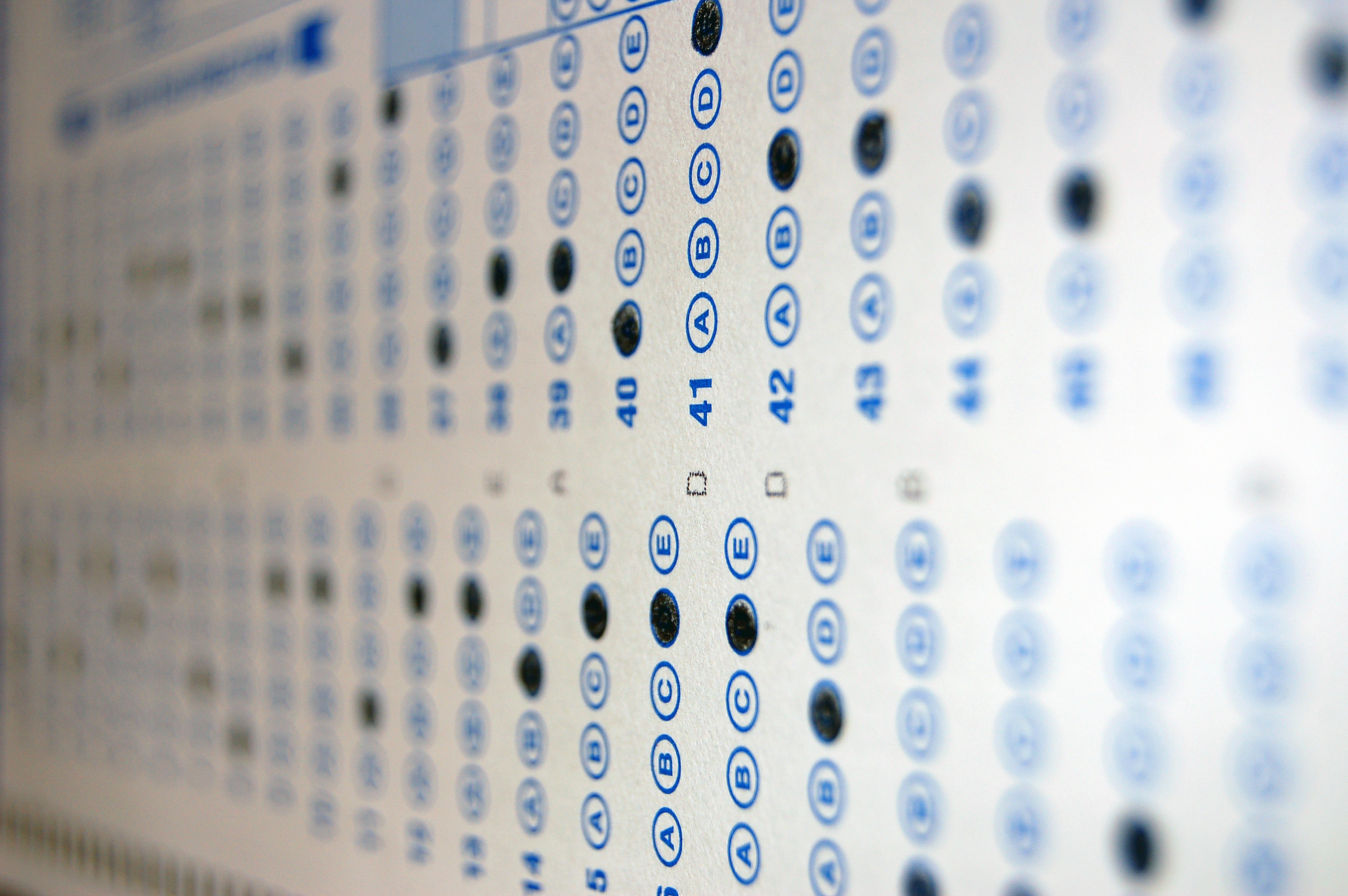-
Charlottesville
- (434) 296-5111
-
Great Falls
- (703) 759-3624
-
McLean
- (703) 288-2808
Georgetown Learning Centers Blog

What You Should Know About the New SAT
The College Board made headlines last week when it announced major changes to the SAT. After soliciting feedback and criticism from a variety of sources, the College Board will overhaul the test to more closely mirror what students are learning in school. More details (including the first practice problems for the new test) will be released in April, but we wanted to share what we already know about these changes.
The College Board’s Rationale and Goals
The SAT’s last round of changes came in 2005, when the College Board added a Writing section to the test, increasing the maximum score from 1600 to 2400. From the beginning, reception of the Writing test was decidedly mixed. Some colleges praised the addition, but many others expressed skepticism or even disregarded that section altogether.
As students, parents, and admissions officers all tried to figure out how to approach the Writing test, national attention began shifting away from the SAT in favor of the ACT. Last year, the ACT surpassed the SAT in popularity. Many observers credited the ACT’s curriculum-oriented perception, in contrast to the SAT’s strategic and somewhat esoteric reputation, for this reversal. These recent changes seem to be the College Board’s admission that the SAT was out of touch and falling behind the curve.
To address these issues, the College Board is changing the SAT to reflect what students are learning in high school more faithfully. The redesign will affect all of the SAT’s test sections, and include major scoring updates. The ultimate goal is a test that will better predict students’ abilities to succeed in college and in their careers.
Breaking Down New SAT Changes
While the updates to the new SAT’s content are garnering the most attention right now, there are also many logistical changes that will affect how students experience the SAT:
Test Introduction. The new SAT will be offered starting in spring 2016, meaning the high school class of 2017 will be the first affected by these changes.
Test Format. Students will have the option to take the new SAT in print or electronically, at some locations.
Test Sections. The new SAT will still include three sections, though they are somewhat different from the current versions: Math, Evidence-Based Reading and Writing, and a newly optional Essay.
Test Timing. The new SAT will last approximately three hours, with the optional essay lasting an additional 50 minutes. Further details about timing and pacing will be released later by the College Board.
A Streamlined Math Focus
In response to feedback from educators and long-term research about college readiness, the College Board will be prioritizing three distinct types of math on the new SAT:
Problem Solving and Data Analysis. College courses in a variety of subjects emphasize mathematical literacy. This content will focus on topics like percentages, ratios, and proportions.
The Heart of Algebra. Linear equations form the core of most high school algebra, and build a foundation that allows students to tackle higher-level topics. The SAT’s redesign will prioritize these topics.
Passport to Advanced Math. Upper-level high school math requires students to work comfortably with complex formulas and equations. Research has indicated that performance on these topics can gauge a student’s readiness for college-level coursework.
Revamped Reading and Writing
The SAT will see perhaps the most significant changes in terms of Reading and Writing material. The overall goal is to more accurately assess students’ abilities to flexibly interact with a variety of sources and evidence. As with the Math section, these changes are designed to more closely reflect what students are doing in high school:
Modern Vocabulary. For years, students and educators have complained that the SAT included outdated and dense vocabulary that forced students to memorize banks of words. The new SAT will prioritize more relevant, context-appropriate vocabulary that students will use during their collegiate years and beyond.
Skillful Use of Evidence. The new SAT will still include fiction and nonfiction passages from humanities, social sciences, and hard sciences while expanding to incorporate informational graphics, career-oriented material, and prominent “Founding Documents” discussing global issues. Students will also have to answer questions explaining how textual evidence justifies the answers they choose.
Mastery of Practical Context. Students will interact with a wide variety of sources, and be asked to answer questions about evidence in its appropriate context. This will include questions that require students to revise texts grammatically and logically based on the information provided.
Updated Scoring Criteria
Scoring changes will accompany the updates to the SAT’s content, and affect students’ testing strategies and overall score reports:
Question Scoring. The SAT has traditionally deducted ¼ of a point for each incorrect answer, but this penalty will be removed on the new SAT. Students will only receive points for their correct responses, while any questions answered incorrectly or left blank will earn zero points.
Overall Scoring. The redesigned SAT will revert to a 1600-point scale similar to the one used prior to 2005. The Math and Evidence-Based Reading and Writing sections will each be graded on a 200-800 point scale, while the optional Essay will receive a separate score.
Analyzing the Changes
Further details will clarify many of the questions about the new SAT, but a few interesting takeaways already seem apparent:
Broader Critical Reading Scope. The College Board emphasized that it would draw from a larger pool of reading topics, including informational visuals, career-oriented material, and historically significant documents like the Bill of Rights. Students can expect documents that will seem more familiar to what they normally see in school on the new Evidence-Based Reading and Writing test.
Reorganized Math Priorities. In response to criticism about math questions that don’t strongly predict college readiness, the College Board seems to be highlighting math essentials on the redesigned test. Topics like the Heart of Algebra and Passport to Advanced Math are likely to mirror what students learn in high school, while Problem Solving and Data Analysis questions will assess students’ comfort with these career-oriented skills.
Writing Criticism Was Heard. Many schools viewed the SAT’s Writing section apprehensively, and others flat-out disregarded it because they felt that the test had no ability to predict college-level aptitude. The College Board seems to have taken this criticism to heart by making the Writing test optional (like the ACT), and altering its structure to emphasize interpretation and use of evidence. It’s too early to tell whether schools will give the new test more consideration, but these changes do raise that possibility.
Drawing Closer to the ACT. Many observers immediately noted that the new SAT will be similar to the ACT, thanks to components like the optional essay and removed scoring penalty. The College Board even referenced the ACT when it explained its rationale for moving closer to what students are learning in school. However, significant disparities between the two tests are likely to persist, particularly due to the ACT’s Science section and structural differences.
Time Will Tell. The College Board’s announcement garnered significant publicity, but ultimate judgment will need to wait until actual test questions and timing details are released in the coming weeks. The College Board will release practice questions and other information on April 16, 2014, providing the first glimpse at the new SAT. It’s important to be informed about what’s happening, but it’s also too early to worry about these changes before they’re fully understood.
SAT Redesign Timeline
March 5, 2014 – The College Board announces significant changes to the SAT for the first time since 2005.
April 16, 2014 – The College Board releases additional information about the SAT redesign, including practice materials for each test section.
Spring 2016 – The new SAT is officially released for students, making the high school class of 2017 the first impacted by these changes.
In order to inform its families about these changes, GLC will continue following these upcoming developments and sharing information as it is made available. In the meantime, we recommend viewing some of these great resources covering the new SAT changes:
College Board Delivering Opportunity Portal
College Board SAT High-Level Blueprint
New SAT Aims to Realign With Schoolwork (New York Times)
College Board Unveils Plans for New SAT (Inside Higher Ed)

Annie Burnquist
Founder
Georgetown Learning Centers
We’d love to hear your first impression of these sweeping SAT changes. What do you think about the new SAT?
Would you like to share your thoughts?
Would you like to share your thoughts?
Leave a Reply
You must be logged in to post a comment.

0 Comments